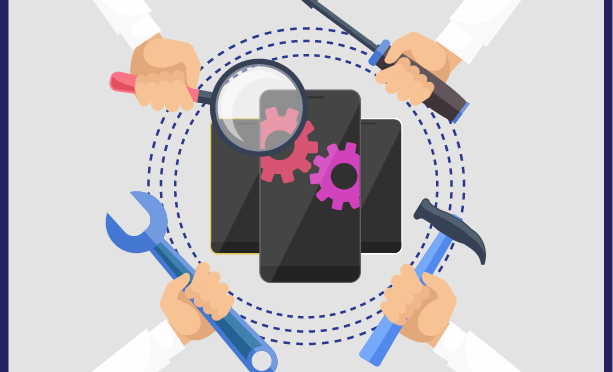Delivering Quality Mobile Apps

What Is Quality?
In simple words, ‘Quality’ means delivering an error-free mobile application which fulfills the user’s expectations.
Why do we need a quality mobile application?
In this world of competence, everyone looks for a quality product. It’s akin to shopping for a product which we use on a day-to-day basis — we, as consumers, first check for its quality, and only then its functionality, durability, look & feel, etc. So ‘testing the product’ is a process that can be done anywhere, anytime. And testing needs to be done perfectly for mobile applications to be of high quality.
What does a tester do to deliver a quality mobile app?
To deliver a flawless mobile application, everything has to be done perfectly right from the time the project starts. This includes continual efforts put in all team members including Project manager, developers, and testers to achieve the common goal of delivering quality application.
To ensure the delivery of a quality application, we need efforts of all team members but testing team members’ efforts will be much more valuable – especially in the final stages – which ensures that the app delivered is a high-quality application.
The following things are needed before starting testing
- Software Requirement Specification documents (SRS)
- Application Wireframe
- Writing Software Test Plan (STP)
- Writing the test cases, covering all requirements
Firstly, testers should gather all required documents like Detailed Requirements document (DRD) and Wireframe analyzing and understanding the requirements and functionality of all the screens. Then, testers should start preparing test plan and test cases documents by covering all requirements which are needed for doing a testing in a sequential manner.
After receiving the build from the developers, the tester will first check whether the build is testable or not, executing all major functionalities by performing smoke/sanity test. If it is testable, then the following things are to be done:
- Complete round of testing (Functional & UI)
- Logging defects
- Executing all test cases by updating results
- Preparing traceability matrix document mapping all requirements
- Performing negative testing on the mobile app which covers non-functional testing types like application with no network, low network, and medium network.
All these things should be covered in the very first round of testing and it’s better to shoot maximum number of bugs in the initial phase itself, so that it is cost and time effective. For the developer-fixed bugs, it is important to perform regression testing because the fixes may sometimes cause side-effects to other features.
Testers will get the confidence on any application quality only if they have done proper testing on the application by covering maximum number of supported devices and versions in all types of supported platforms like iOS, Android, Windows, and Blackberry. There are two types of applications in mobiles: one is native application and other is testing the application in mobile browsers. While doing testing in mobile browsers, the testers need to cover various browsers versions.
By taking care of all the above-mentioned things, one can easily achieve the goal of delivering high-quality mobile app by satisfying the end-user expectations.
Divya Priya works as a Software QA Engineer at [x]cubeLABS. She is an ISTQB certified tester and has around 2 years experience in testing mobile & web applications for different domains like Education, Social, Gaming, Travel, Finance andHardware Integration.
![Blog-[x]cube LABS](https://d6fiz9tmzg8gn.cloudfront.net/wp-content/uploads/2016/06/blog_banner.jpg)





